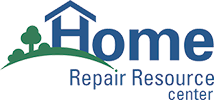by HRRC Financial Counselor Keesha Allen. Are you thinking of making home improvements or additions to your home? Are you approaching a life event for which you may need access to large sums of money? If so, you may consider tapping into your home’s equity (the value of your property over and above any mortgage and/or liens against it). There are two home equity plans that may be available to you. Both plans are designed not to pose undue financial risks, and both require that your home serve as collateral for the obligation. Before you make a decision about which is best, shop around and compare products offered by banks, savings and loans, credit unions and mortgage companies. Learning about home equity loans and home equity lines of credit will allow you weigh carefully the costs and benefits of these products.
A home equity loan is a loan, secured by your home, for a fixed amount of money that you repay over a fixed period of time. This product is best when you need a set amount for a specific purpose, such as a bedroom or bathroom addition. Just like your original mortgage, you repay the loan over a fixed term; the payment schedule specifies equal payments that will pay off the entire loan within the loan period. The amount you can borrow is usually limited to 85% of the equity in your home. That calculation is primarily based on appraisal of your home’s value, but the amount may also be affected by your income, credit history and/or the market value of the home. Pay close attention to fees and annual percentage rates (APR’s) while you shop for the best product. Also take into consideration whether or not closing costs or points are added to the loan amount, as you’ll have to pay more to finance them. Choosing a home equity loan offers the security that you have a fixed time to pay back a fixed amount, without any increases in your monthly payment – but be aware that late payments or defaulting on the loan may cause the lender to foreclose on the house serving as collateral.
On the other hand, you may find that a home equity line of credit (HELOC) will better fit your needs. A HELOC is a revolving line of credit where you are able to borrow as much as you need, at any time you need it, by writing a check or using a credit card connected to the account. Ask whether there is a minimum withdrawal requirement when you open your account, whether there are any minimum or maximum withdrawal requirements after your account is opened, and whether there is a “draw period” (a fixed time during which you can withdraw money from your account.) Variable interest rates are common with home equity lines of credit, where your interest rate will change based on the national value index. Lenders will frequently offer special discounted rates to sell products; usually, you’ll pay a low interest rate for only a short “introductory” period, and higher rates after that time. Be sure to research how and when payments will increase, and how much your payments can change. Understanding the repayment terms will prepare you for balloon payments or other fees that may be attached to the loan as you work to settle the debt. As a consumer, the lender should provide you with a clear understanding of all terms – especially since your home may be at risk in the case of non-payment.
Before you agree to the terms of any loan product – whether it is a home equity loan or line of credit – shop and research all products available to you, make sure the lender informs you of all the terms of the product, and choose a plan that will ensure you’ll be able to successfully manage and satisfy the debt. If you have any questions or need assistance finding the right product for your circumstances, contact HRRC’s financial counselor Keesha Allen at (216) 381-6100 ext. 13.

